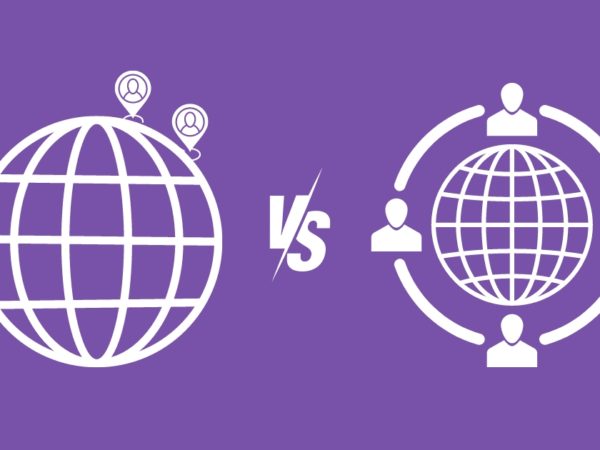Having a good understanding of what a (future) success for a project looks like now should always be the ultimate goal of every project’s kick-off.
One thing that can surely bring you there is a well-defined project scope. Creating one is, however, not a trivial activity.
Project scope isn’t just a description of your project goals and milestones, a list of deliverables, mandatory tasks to handle, enumerated broken-down costs, needed resources, or committed deadlines to meet.
Often, it also specifically outlines what the project will not deliver. This might sound a bit tricky, as I would argue that a project shall not deliver besides what’s in scope. Anyway, some people like to highlight that just for the sake of additional personal safety.
It’s documentation that states the agreements between all stakeholders, and the expectation is everybody will reference them during the whole duration of the project. So, let’s have a look at how we can approach the construction of such a document.
Developing the Scope
Before anything exists, you need to have an approach to generate a good amount of ideas and content that will form the potential future project scope. There are several techniques that you can use for that, and here is a list of a few of them.
#1. Brainstorming
It is a method that is so old everybody has probably heard about it already, but still, seeing a good brainstorming session, in reality, is as much of a surprise as it was 20 years ago.
The intention is to gather a group of stakeholders and generate as many ideas as possible. Then, go through them one more time, polish what’s necessary, prioritize the outcomes, and finally agree on the final set of statements forming project requirements.
The moderator of such discussion is a very important piece of the success, as the discussion shall always go forward and right to the goal while still preserving the freedom of ideas generation.
You can also create focus groups and do basically the same but with more groups of stakeholders than just one. Maybe the stakeholders have few distinguished areas of competencies, and then this can make sense.
#2. Interviews
Another approach might be to set up dedicated one-to-one sessions where you interview stakeholders one after each other separately. This can eliminate some chaos along the way, but it also requires setting high expectations from the interviewer.
#3. Surveys
A less effective but still possible method is conducting some detailed surveys with predefined options for the answers. This will remove a good amount of authenticity from the stakeholders. But hey, maybe you know the options better than they do, and then this will make some sense again.
#4. Benchmarking
You can research and collect project scope results from several similar projects to the one you are about to start. Then, collecting best practices and potential challenges can simplify the whole process. You also won’t involve anything particularly breakthrough, but if that’s your ultimate goal, so be it.
#5. Prototyping
This is a very interesting method, which is probably used not often enough. It goes around creating a mockup of the final project and identifying the requirements and even potential issues right from this (already functional) prototype. This will give you a sense of information you can literally touch before the project even starts.
#6. Work Breakdown Structure (WBS)
The WBS is some old-school technique of how to structure the future tasks on the project. The problem with this is it requires you to know and anticipate all the tasks you will need during the project right at the beginning.
Naturally, this is rarely the case, and so the WBS is getting updated, reworked, or refactored during the project. So, it kind of loses its purpose of origin. Still, it is a valid way how to define the scope of the project by listing down all the expected tasks the project will do.
Why is the Project Scope Important?
The project scope defines the boundaries of the project and sets expectations for what the project will deliver. Here are some more specific reasons why the project scope is important:
#1. Clarity
A clear understanding of what the deliverable shall look like is essential. Without this vision, no one can clearly say what the good shall look like.
#2. Setting Expectations
The scope sets the expectations for the team, stakeholders, and users. It removes or (at least) greatly minimizes future conflicts or misunderstandings. It defines what to do in a corner situation (that nobody assumes will happen, but of course, it will happen).
#3. Guideline
A good project scope will define the guidelines for decisions. The ultimate goal is for every decision to align with project objectives.
Guidelines will also help the project stay within the original boundaries and not to expand beyond them.
#4. Resource Management
The project scope manages resources by identifying the tasks and deliverables required to complete the project. This, in turn, helps to ensure appropriate resource allocation.
Components of Project Scope
Now that we know how to start developing the scope and why we need it, it’s important to understand what are the components that a good project scope should contain.
- Project Objectives
- They describe the overall goals and purpose of the project and what exactly the project shall achieve.
- Deliverables
- List of documents, services, or complete products that are part of the expected outcome of the project.
- Milestones
- Even if the project schedule is for a specific timeframe, there are key time highlights or checkpoints in the project timeline, which will declare the right progress of the whole project. Their precise definition ensures that if the milestones are achieved, then the project is on track.
- Scope boundaries
- This is an explicit definition of what is in scope and what is potentially out of scope. It’s fair to include into the not-in-scope list, especially those items which otherwise some of the stakeholders could assume that they are indeed still in scope.
- Assumptions
- Document any assumptions that have been made about the project. Those can include, for example, timelines, milestones, budget predictions, or resource allocation over the period of the project. It can also include content-related assumptions about the specific deliverables.
- Constraints
- If there are any constraints that might impact the progress of the project, then list it here.
- Risks
- You shall identify any potential risks that might jeopardize or largely impact the project if they become real issues. Even more important is to define strategies for how such risks can the project mitigate.
- Stakeholders
- In this section, you want to identify all the key stakeholders participating in the project alongside their roles and responsibilities.
- Acceptance Criteria
- This is a critical section that defines when exactly the deliverable is considered successful or complete. What exactly must be fulfilled to mark the project as completed?
Template for Creation of Project Scope
Bringing it all together will form a template for how to successfully create a project scope that will define the entire lifespan of a project. Here is a step-by-step method for creating a project scope statement for a software, app, or web development project:
➡️ Define the project objectives using one of the development techniques described above. Start by defining the overall goals and then convert to specific requirements. This should include a definition of what the software or website shall achieve as the end result.
➡️ Identify the project deliverables such as products, documents, services, or any important activity during the project that is subject to the measure of success. This can include a list of all features and functionalities of the software or website.
➡️ Define the boundaries of the project, including what is included and what is not included in the project scope. This should include a clear description of the project’s limitations and exclusions.
➡️ Identify the project assumptions that are valid for the project, such as assumptions about resources, timelines, or budgets.
➡️ Define the project constraints that can impact the project. This can even include similar areas as the assumptions section, but this time from the limitation point of view (what if this or that will happen instead of what was agreed before).
➡️ Identify the project risks and strategies to overcome them. Risks are basically not yet developed issues, so it’s good to resolve them before they become real issues.
➡️ List down the project stakeholders involved in the project, including their roles and responsibilities.
➡️ Define the project acceptance criteria that must be met for the project to be considered complete and successful. This is basically a comprehensive description of what it means to have a successful outcome for the project.
Best Practices for Creating a Project Scope
While following this template and constructing the perfect scope for your next project, it is always good to consider some experiences from the past.
In the end, there were already many projects delivered, and rightfully so; you could assume this topic is already greatly explored, and every new project definition, therefore, must be a success.
It’s interesting to know that this is actually far from the truth. Still, even today, there is a massive amount of projects that are not successful. There might be many reasons for that, but one of them certainly is the lackluster definition of the scope of the project. So here are some best practices for creating a reliable project scope.
#1. Involve the Stakeholders
Involve all the stakeholders as early as possible and as much as possible. The fewer assumptions and the more real facts, the better for the project. Putting the ideas and wishes of the key stakeholders aside has the potential to lead to significant problems during the project duration.
Most of them will come to light during the acceptance criteria phase of the project, which is the worst time to fix the problems within the original timelines of the project.
#2. Stick to the Templates and Processes
The less solid processes, the more acceptance of chaos and unpredictability. Processes will give the project a structure. Templates will implicitly define the form expectations, and the deliverables are then more likely to be accepted sooner.
#3. Be Specific and Measurable
Use well-known language familiar to all the stakeholders. Communicate with specific facts, not with emotions or blurred statements. Do not formulate the statement in such ways it could cover someone’s back in case something does not go according to the wishes. If the formulation is open, honest, and measurable for all the parts, this is the best reassurance of a good relationship you can get.
#4. Collaborative Approach
Every time a decision is necessary, use a collaborative approach. Involve as many parties and stakeholders as possible, even for expressing their standpoints. Then, you can take them and consider them when formulating the conclusions. Everyone’s vision and standpoints are important in some way or another. So, seek for understanding before the stakeholders can understand you.
#5. Review and Update Often
Do the revisions and updates to the scope as early as possible within the project’s timeline. The later such changes will come into place, the harder it will be to resolve the implications they will bring to the table. Waiting with the potential problems to see if they will vanish by themselves proved to be never the right strategy, so do the exact opposite in every applicable situation.
Benefits of a Good Project Scope
So, you followed all the good pieces of advice above, created a solid template and processes, involved all stakeholders, and formed a precisely structured project scope. If you ask now what shall be the benefits of all this good effort and work, then here are some of the real-world benefits you might notice sooner or later.
Firstly, you can expect great improvements in project planning. Since you already invested some considerable time into the plans anyway (for example, with the WBS definition), you are better prepared for just any planning activities during the project.
You might also see better communication across the full spectrum of parties and stakeholders, not only inside your internal team. Simply put, everyone is on the same page and has clear goals in mind, which are the same for everybody. If the people are describing the success in the same words, then that means you are in sync within the portfolio.
The reduction of unplanned risks is another great side effect of a good project scope. The more effort is put into the definition of risks and their mitigation inside the project scope, the less likely it is the situation that another unexpected risk scenario will occur. You are also better positioned to execute dynamically the changes to the project plan in case the current situation asks for it.
Then, there is the improvement in resource management. A good plan results in the optimal allocation of the right people for the right phases of the projects. This is not magic but a natural implicit outcome of good project planning.
Another direct side effect is that your stakeholders will be happy, and satisfaction measurement will reach high numbers. People will like to work on the project, and they will likely invest more creative time in the project because they will just feel this is the right thing to do. It will make so much sense. Obviously, poor project scope definition directly leads to opinions that nothing all that matters because, anyway, it’s not working well.
Lastly, your project outcomes will gain in quality. The outcomes are a direct result of the activities you execute during the project timeline. If the activities have a good plan and description, it is much more probable the outcomes will follow the lead.
Conclusion
There you have it. A concrete plan on how to approach the creation of a project scope. Obviously, it’s not everything you will need to succeed in this task, but hopefully, it will bring some important guidance into place that will show you the right way.
Next, check out the top project charter templates for a smooth start to your project.



